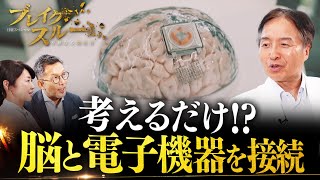His team has created an ultra-thin electrode sheet that adheres directly to the brain’s surface, along with a compact brainwave sensor fixed to the skull. This innovative setup enables precise measurement of faint brain signals, which can then be analyzed by AI to control external devices.
Hirata founded the startup JiMED in 2020 to commercialize this breakthrough technology. His background is unusual: after studying robotics at the University of Tokyo, he worked as an engineer for an automaker before pursuing medicine. By combining engineering and neuroscience, he has bridged two disciplines to develop technology capable of linking the human brain with computers.
At Osaka University’s advanced medical research facility, Hirata demonstrates how brain signals are read. Electrodes attached to a special cap capture faint electrical activity from dozens of points on the scalp, which are displayed on a monitor as waves oscillating around 10 hertz. These signals indicate which parts of the brain are active when a person moves their hands, mouth, or feet.
However, scalp electrodes can only detect broad patterns and are easily disrupted by muscle movement or even blinking, making it difficult to capture accurate brainwave data. To overcome this, Hirata spent more than 30 years developing methods to measure extremely weak brain signals directly from the cortical surface.
His company’s miniature sensor—small enough to fit in a wristwatch—can be surgically implanted beneath the skull, where it records brainwaves through the electrode sheet. This allows far more precise detection and real-time decoding of brain activity using artificial intelligence.
By reading the brain’s electrical language, Hirata aims to give patients with paralysis the ability to operate prosthetic limbs or digital devices purely through thought. “Japan has the expertise and technology to compete at the global level,” he said, expressing hope that this innovation will lead the world from Japan.
His work represents a major step toward the practical realization of brain-machine communication—an achievement that could redefine the boundary between human thought and technology.
https://newsonjapan.com/article/147163.php



